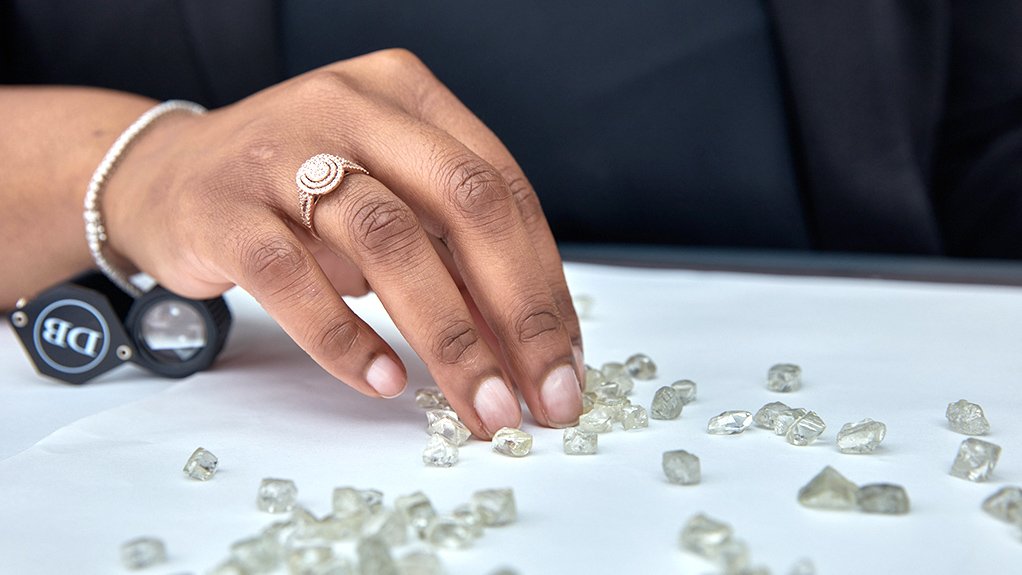
Botswana is seeking a greater interest in De Beers, and Angola is seeking an interest too. To the mind of diamond luminary Martyn Charles Marriott, this could be an opportunity to return to old strengths and disciplines.
In an article on the website of the International Diamond Manufacturers, Marriott cautions Botswana about going it alone and falling into the trap of yet again putting all its eggs into one basket.
Marriott notes that the current deal Botswana has with De Beers is fantastic in that 80% of mine profits go to Botswana – a level that far surpasses anything in the mining industry anywhere in the world.
Marriott expresses the view that the debate now under way about the future of De Beers presents an opportunity for a return to the discipline and control of the natural diamond market.
Many recall that the best economic viability of the diamond industry took place in the days when it had a stockpile and a quota approach, which kept supply and demand in crucial balance.
In addition, large sums were spent on unforgettable advertising campaigns and the entrenchment of the global diamond engagement ring tradition.
Collaboration is what gave diamonds their old strength; fragmentation is what is causing their current weakness.
Marriott recalls how collaboration led to flow of alluvial diamonds from West Africa being absorbed by the diamond buying offices that were created at source. In addition, Russia recognised the way in which the collaborative approach was good for everyone, from diamond miners through to diamond cutters, diamond traders, and diamond consumers.
It was Marriott, as the then manager of De Beers Dicor, who persuaded the government of Sierra Leone about the benefits of collaboration. This was ahead if his departure from De Beers, which coincided with the discovery of diamonds in Botswana, where he played a key consultancy role from 1970 to 1983.
It was then that Botswana was persuaded that the Central Selling Organisation system could uplift its economy – but with the caveat that the diamonds had to be properly sorted and valued, and production at Botswana’s Orapa was increased to a level that helped Botswana secure a favourable quota. It was also Marriott who initially proposed that the future development of the mines in Botswana should be by an equally shared 50/50 company.
For more than a dozen years, Marriott was a member of Botswana’s negotiating team with De Beers, which secured the very high level of profits that would accrue to the Botswana government from the development of its diamond mines. During the joint development of Jwaneng, he coordinated Botswana’s inputs into the project.
Interestingly, in 1980, even the Australians were persuaded about the merits of the Central Selling Organisation for the Argyle mine.
From 1985 through to the end of the century, Marriott was heavily involved in the restoration of the Angolan diamond industry, as consultant and valuer to Endiama, the article in on the website of International Diamond Manufacturers recalls.
In this instance, as production in Angola was then small, Marriott initially advocated sales by tender amid the build up a successful sales procedure that was eventually undermined by corruption.
The establishment of the Kimberley Process also came about with Marriott help, but unfortunately, in 1986, the diamond world began to disrupt. Argyle and De Beers ceased their cooperation. The Russians became increasingly independent, and Canadian mines opted to market their production separately.
Now synthetic diamonds are adding to the competition.
Meanwhile, Martyn’s two sons, Luke and Benjamin Marriott, are continuing worldwide valuing and have developed eValuer, a system of pricing and valuing diamonds.
“I relate all the above to demonstrate the experience that leads me to write this article concerning a possible future for the natural diamond industry based on cooperation between the African producers,” Marriott writes.
“I must admit that I found no enthusiasm for my ideas for African cooperation during my time working for the Government of Botswana. Moreover, at the end of my work there, I was at odds with its policy. I did not believe in the move towards local processing. I felt it unlikely that local establishments could compete with the industry as it stood, particularly the Indians. I preferred a sovereign wealth fund, further development of the cattle industry, tourism, and concentration on developing other industries. I felt that the pressure on De Beers for local processing could equally well be used on them and Anglo American to develop other industries.
“However, times change. Botswana is seeking a greater interest in De Beers, and Angola is seeking an interest too. To my mind, this could be an opportunity to return to old strengths and disciplines. Some sort of OPEC for diamonds that could provide a basis for the future,” Marriott proposes.
Source: Miningweekly